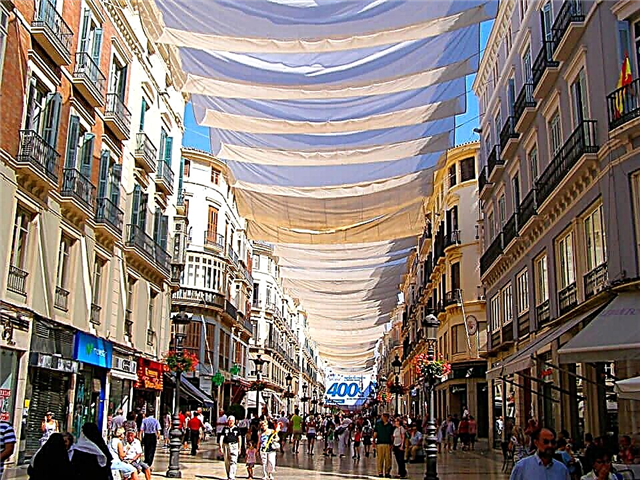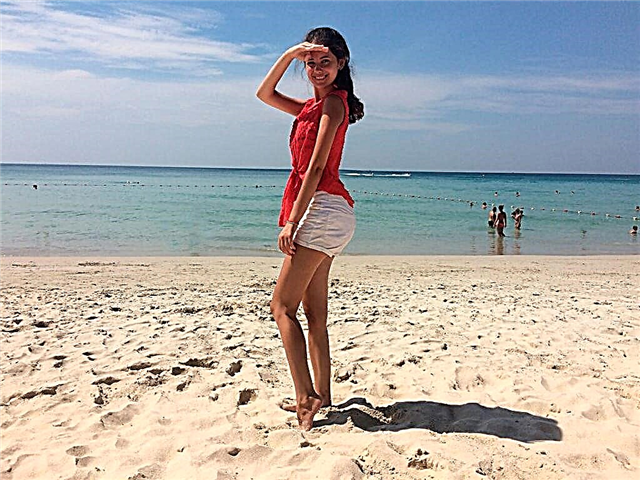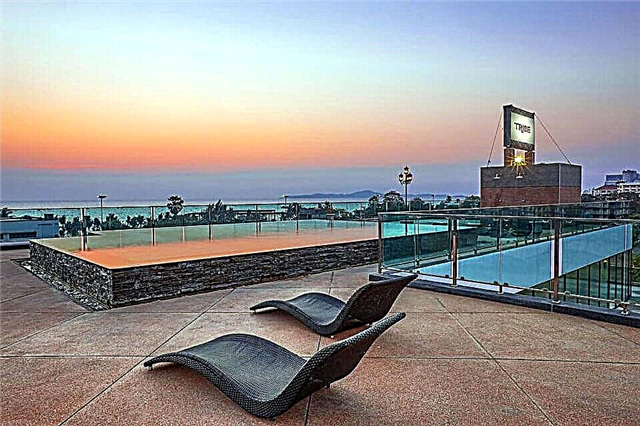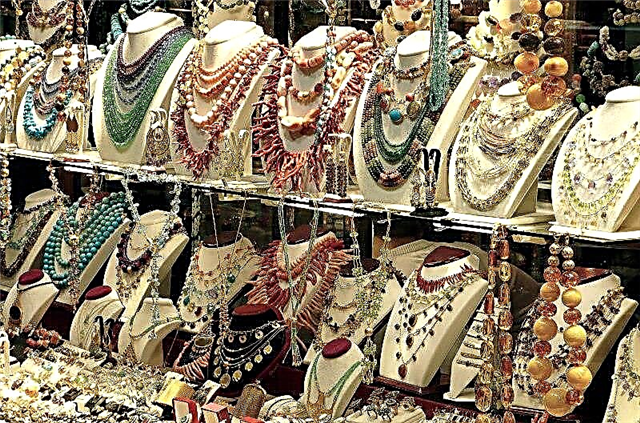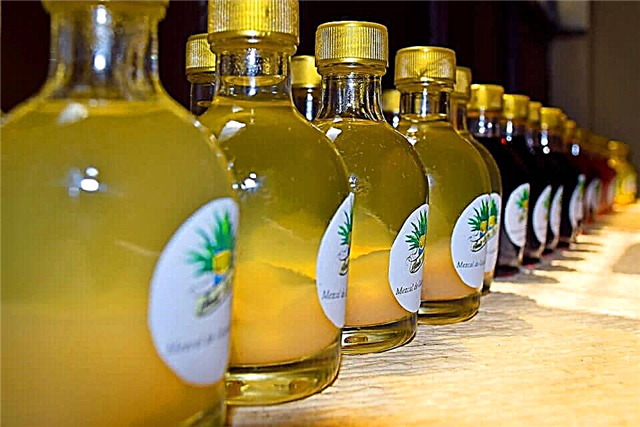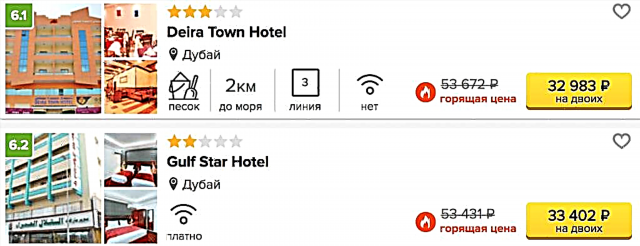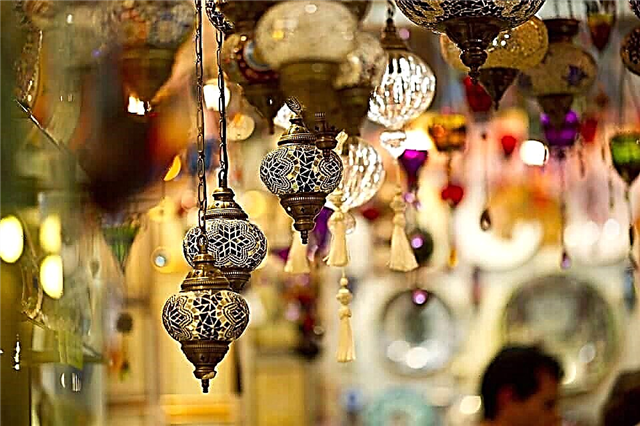What to see in Istanbul in 2 days on your own - a tourist who arrives in the city for the first time is perplexed. It turns out that you can see the main attractions. For the success of the event, you need to correctly draw up a route. On the first day, it is recommended to hike around the historical center of Sultanahmet (this is the European part). Here cultural heritage objects are located compactly, it is convenient to move from one to another. It will take the entire second day to explore the Asian part of the ancient city. And you will have to move a lot and over considerable distances, so it is recommended to rent a car. Of course, a lot of energy will be spent on such a trip, but the impressions received are worth it.
First day
On the first day, it is worth seeing the sights, compactly located in the historical center. This is the Sultanahmet area. Here, the traditions and cultures of the ancient city are intricately intertwined. The center of Istanbul is focused on tourists: there are many cafes and restaurants, benches for relaxation are placed in parks and squares. You can have a snack and relax between excursions.
Topkapi Palace

The complex is located at the mouth of the Golden Horn. And the place was personally chosen by Mehmed 2 the Conqueror to create his own residence. Construction began immediately after the fall of Constantinople and continued for several decades. The dynasties of sultans were replaced, and Topkapi was completed taking into account the wishes of the rulers. Initially, the harem was located separately from the common territory, and only at the insistence of the Sultan-Khyurrem joined the main premises.
Topkapi was the residence of the sultans for 400 years, and in the 19th century Abdul-Majid ordered to build a new palace: Dolmabahce. The ruler loved European architecture: the ancient castle seemed to him too "Ottoman". The royal court was located in Dolmabahce until 1923. After the formation of the Turkish Republic, Topkapi became a state museum. After all, the president of the country chose Dolmabahce to live.
But the old Sultan's palace has completely preserved its previous interiors and has become a favorite place among residents of the capital and tourists. There is a well-groomed area, and in the pavilions, guests will see luxury items used by members of the royal family. One day is not enough for a detailed survey of Topkapi: but it is quite possible to walk through all the courtyards and get a general idea of the ancient traditions. Parts of the residence (courtyards) are separated from each other by walls and connected by gates.
Gulhane Park

The park can be accessed directly from the Topkapi gate. It is convenient for tourists with limited time. On the site of the present garden, the Byzantines organized military parades. The temple of St. George was located nearby. The territory had a service purpose. But Mehmed the Conqueror, after subjugating Constantinople, decided to create an entertainment center here: Sarayburna turned into ramparts surrounding the Chinese Pavilion. Now holidays were arranged for the Sultan and his family, and the soldiers competed in military disciplines.
Later, the rulers decorated the park:
- a wonderful garden was laid out
- memorial stones are placed
- fragrant flowers planted
- gazebos and recreation pavilions were built
Then, for the first time, they created a permanent group for cleaning and maintaining the territory. But the fire of 1863 destroyed most of the buildings and plants. But the territory remained closed: only representatives of noble families had access here. At the beginning of the twentieth century, Gulhane was opened to everyone. But at the same time, the garden began to decline: it was simply not looked after.
All this led to the need for a large-scale reconstruction in the 21st century: it was only in 2003 that the garden was reopened to guests. Today Gulhane attracts with flower beds (at any time of the year), well-groomed paths and comfortable benches. On the territory there is a cozy teahouse, from the veranda of which a wonderful view of the Bosphorus opens.
Sultanahmet square

This is the central square of the Fatih district, which is often visited by tourists. It attracts guests by the fact that different eras and cultures intersected in a small space:
- Septimius Sever, after the capture of Byzantium, ordered the destruction of the city center and a hippodrome on the free territory. The work lasted 130 years. In 1204, the crusaders destroyed the hippodrome, pillars and stones were taken away for the construction of nearby buildings. Some of the ancient columns support the portico of the Blue Mosque.
- The German fountain was donated to the city by Wilhelm II in 1901. The structure is unusual: it is, rather, a gazebo, under the dome of which there is a capacious bowl. The pool is lined with wonderful mosaics. Previously, the townspeople took drinking water from the fountain.
- The Egyptian obelisk is over 3000 years old. He was brought to Constantinople by order of Theodosius 1.
- Column of Constantine is also called Openwork. Its inscriptions indicate that the structure must surpass the Colossus of Rhodes.
- The amazing Serpentine Column, although it lost its head, still attracts tourists.
Traveling around the square, guests get acquainted with the main events that took place on the territory of modern Istanbul many centuries ago.
Saint Sophie Cathedral

Hagia Sophia is a cathedral with a complicated history. It was built as an Orthodox church. At the same time, there was already a model: small Hagia Sophia. The main motives were repeated by the architects in a large one. No money was spared during the construction: Justinian very freely disposed of the treasury. Sophia was to perpetuate his reign. The emperor wanted to dig the inner walls with gold. But astrologers later predicted the ruin of the temple, so part of the interior is unique frescoes.
Brothers in the faith plundered the temple during the 4th crusade: a unique page in history. The valuables were exported to Europe, where they remained forever. But Sophia was restored, and services in it continued until 1453, that is, until the capture of the city by Sultan Mehmed 2. The wise ruler preserved the Orthodox cathedral, but ordered it to be converted into a mosque. Hagia Sophia played this role for about 500 years.
It is noteworthy that its architecture inspired the creators of the Blue Mosque and the Suleymaniye Mosque. In 1935, the President of Turkey issued a decree on the establishment of a museum in the building of Hagia Sophia. The plaster covering the unique frescoes was knocked down. But some of the later interior elements have also survived. Therefore, tourists can see a bizarre combination of traditions and cultures of different faiths.
Blue Mosque

The building is located on Sultanahmet Square: if you cross it, and here it is, a unique mosque. Turkey constantly waged wars of conquest. And Sultan Ahmet 1 was constantly losing battles. The subjects grumbled, and ceased to reckon with the country. In all this, the Sultan saw the displeasure of Allah, and in order to appease the creator, he ordered to build a mosque. The construction proceeded quite quickly: 7 years after the foundation was laid, the first service took place here.
The interiors are made in blue colors (hence the name of the mosque). Believers saw walls inlaid with precious wood, marble tiles and unique carpets on the floor. The makhrib also contained a relic brought from Mecca: a black stone. The architect mixed 2 opposite styles: Ottoman and Byzantine, and he was right. The mosque turned out to be unique. And 6 minarets, instead of 4 laid by Islam, still makes historians wonder about the reason for such self-will of the builders.
Many historians note that the Kul Sharif Mosque, built in Kazan at the beginning of the 21st century, is similar to the Blue Mosque in Istanbul. Tourists are given the opportunity to confirm (or refute) the hypothesis themselves. The Blue Mosque is active, but you can enter it with a guided tour or on your own.In this case, you should adhere to the established rules: they are written on the information board. And you can rent a cape or skullcap in the shop at the entrance.
Titanic city taksim
Just 5 minutes walk from Taksim Square
394 Reviews
based on Very good 8.3

Opera Hotel Bosphorus
Rooftop pool and restaurant
based on Very good 7.8

Swissotel The Bosphorus Istanbul
With stunning views of the Bosphorus
922 reviews
based on Very good 9.0

Basilica Cistern

The underground reservoir is located 100 m from Hagia Sophia: very convenient for those who want to see a lot in a short time. The rulers of Constantinople took care of the daily needs of their subjects. And the uninterrupted supply of the city with drinking water is the main one. However, the construction of the tank took quite a long time: almost 2 centuries.
The tank served properly:
- From gathering places in the vicinity of the city, water flowed into it through pipes. Sometimes aqueducts were used (some have survived to this day).
- Then, through pipes, fresh water was supplied to the fountains, from where the townspeople took it.
The system of cisterns made it possible to provide the capital with moisture in abundance in the driest year. The entrance was guarded: a necessary measure in any era. After the capture of the city by Mehmet 2, the cistern was abandoned: it was not cleaned, the system of pipes and aqueducts was not repaired. But nevertheless, the structure worked properly: the inhabitants punched wells in the basements of houses and provided themselves with drinking water.
Sometimes river fish ended up in the buckets. But then the cistern was finally turned into a landfill and forgotten about it. In 1985, the Turkish government decided to clear the cistern and make a museum there. Today, tourists can comfortably walk through the underground gallery, view marble vaults and ancient columns.
Cisterns of Feodosia

To supply the city with fresh water, a whole network of underground storage facilities was built. The Theodosius Cistern is located next to the Basilica Cistern. It is smaller in size, but older by as much as 100 years. This cistern was discovered by accident: after the planned demolition of the house, an underground water storage was opened. They examined it and decided to turn it into a museum.
Historians have established that the cistern was ordered to be built by the sister of Emperor Theodosius, Elia Pulcheria. She was concerned about the limited supply of water to the Grand Palace. It was sorely lacking for watering flowers and fountains. Elia decided that a dedicated offline storage was required. Rainwater accumulated in the reservoirs of the Belgrade forest and flowed down the aqueducts into the Feodosia cistern.
Incredibly, this storage has come down to us completely intact. For the convenience of guests, lighting is organized inside, wooden bridges are laid. Those who find it difficult to descend the steep steps are encouraged to use the elevator. Today tourists can see not only unique Doric and Ionic columns, but also sculptures. All exhibits are provided with information boards.
Grand bazaar

A huge shopping center adjoins Sultanahmet Square. It's just over a kilometer from Hagia Sophia. The Grand Bazaar is one of the largest covered markets in the world. But here is not only an abundance of different goods: the unique oriental atmosphere attracts guests from all over the world. You don't have to buy anything: an ordinary walk will leave an unforgettable experience.
The huge trading city includes:
- trade pavilions, shops, shops
- warehouses
- studio
- mosques
- restaurants
- bath
- fountains
- currency exchanges
- school
The Grand Bazaar welcomes over 500,000 guests every day. And you can buy a lot: from spices to the latest models of electronics and branded clothing. The products are attractive in price, but you should be careful: there are quite a few fakes here. This is especially true for jewelry and well-known trade brands.
It is important to remember that you can and should bargain at the Grand Bazaar. The original price is always grossly overpriced. As a result of a skillfully conducted bargaining, the price may drop several times. And both parties will get pleasure: both the seller and the buyer.
Evening Bosphorus cruise

A busy day should be finished with a walk along the evening Bosphorus on a comfortable yacht. Guests are picked up directly from the central Sultanahmet area by minibus and brought to the pier by 8pm. And at 9 o'clock the ship will set off on a fascinating voyage along the coast of Turkey. First, the sightseers will pass the European part of the city.
Near the bridge across the strait dividing the continents, the yacht will stop. Here you can take pictures. On the way back, guests will see the Asian part of the city: mosques and palaces, illuminated by colored lanterns. A table is laid for guests in comfortable rooms with huge windows. Here you can enjoy cold snacks, meat or fish. The dinner will end with a traditional oriental dessert.
The price also includes soft drinks. But you can diversify the proposed menu: alcohol is offered for an additional amount. During the journey, guests are entertained by dancers and actors. Tourists will see a performance from the life of the country, folk dances, including an unusual belly dance. After the end of the walk, the organizers of the excursion will take guests to the hotel.
It is important to understand: this is just a walk along the evening Bosphorus, the presence of a guide is not expected. But there is a company employee who will answer the guests' questions.
Second day
In order to explore the most interesting places located outside the historical center, in 1 day, you will need a car. It can be rented with or without a driver. When traveling on your own, it is recommended to use the navigator when planning a route.
Pierre Loti Hill

The unusual name was given to the place by the Frenchman Julien Vio. He took a liking to a small coffee shop on the top of the hill. Here the traveler drank coffee and wrote. The pseudonym of the writer is Pierre Loti. Tourists believe that the hill is the best observation deck in the city, from which an amazing panorama of the Bosphorus opens up. By the way, Pierre Loti thought the same way: he argued that from here everything looks at a glance.
The height of the slide is 53 meters, the rise is quite steep. But for the convenience of guests there is a cable car. From her booths, a view of colorful houses, mosques and palaces gradually opens. And at the top is the famous cafe: the one that Pierre Loti loved so much. It still works today: it serves strong coffee, branded apple tea and amazing desserts.
The veranda of the establishment is an additional observation deck. By the way, the prices are quite high here. But this scares few people: tourists are ready to pay for the history of the place, empty tables (especially on the 1st line there are few). There is also a fashionable hotel with a restaurant. Room and lunch prices are quite high, which is why tourists with a reasonable travel budget stay there.
Taksim Square

Once it was a place where aqueducts intersected, supplying water to different parts of the city. And today the square is popular with tourists: the conditional border between the old and new parts of Istanbul runs along it. Taksim is a visited place, the square is loved by the townspeople and guests of the city:
- there are many historic buildings dating back to the 19th century
- it is a symbol of the formation of the republic
- nearby is Istiklal shopping street with shops, nightclubs, restaurants and hotels
Taksim is a traffic-free zone, so your car will have to be parked nearby. In the center there is a monument to the Republic. Warlords and ordinary soldiers who fought for freedom are immortalized here. As a token of gratitude to the Soviet Union, the author sculpted a sculpture by K. Voroshilov. City streets diverge from the Republic monument in different directions. Observation platforms have been arranged on the buildings surrounding the square. Istiklal leaves no one indifferent: it is a concentration of small and large shops, cafes, restaurants, hotels and official buildings. The consulate of Russia is also located here.Istiklal street is always crowded.
Church of the Holy Trinity

This is the largest of the functioning temples in Istanbul. The church was erected on the site where the church of St. George once stood. Ayia Triad Rum was built as an Orthodox Russian in the late 19th century, but later transferred to the Greek Patriarchate. In the church, services are held daily in Greek. The peculiarity of the temple is 2 bell towers and a dome. It would seem that it is so special that an Orthodox church has a dome?
The fact is that during the time of the Ottomans, domes were allowed to be erected only over mosques. An unprecedented indulgence was made for the Church of the Holy Trinity. The main feature is the ancient iconostasis. Some of the images are from the Byzantine period. The interiors consist of frescoes of stunning beauty. The ceiling is traditionally domed. It is painted with images of the apostles, Jesus Christ and angels. In the middle of the 20th century, the building of the temple was damaged during the riots. But at the beginning of the 21st century, it was completely reconstructed.
Flower passage

The shopping and entertainment center owes its name to emigrants from revolutionary Russia. They had to somehow raise funds for their livelihood, so many families started trading. And noble ladies with impeccable taste began to sell flowers, renting places in the shopping center.
In general, during its history, Chichek passage has changed its purpose several times:
- shopping pavilion first
- then the center with beer and tobacco shops
- then again a trade pavilion with a large number of flower shops (merit of Russian emigrants in 1917)
- again a place for cheap pubs (with a corresponding audience)
- in 1990, the reconstructed building acquired its previous appearance
There are many flower pavilions, music is constantly playing, artists and poets gather to spend the evening in a pleasant atmosphere. Cafes and restaurants invite you to taste the local cuisine. The prices are quite affordable. It is not surprising that both locals and tourists from all over the world love Chichek Passage. It is worth spending an hour or two here, listening to gypsies, and tasting meze prepared according to author's recipes. In Chichek Passage, an amazing unity of modernity and the ancient spirit of the Ottoman Empire reigns.
Modern Art Museum

This is the first cultural institution in Istanbul. Only two decades ago, there were no such centers in Turkey. For the organization of the first exposition, the building of the former warehouse in the port approached. Today it hosts exhibitions, presentations and conferences on various types of art. The halls on the 1st floor are intended for these purposes. A cinema hall is also located here, where screenings of author's films are held. There is a library with a reading room.
On the second floor, tourists can see an exhibition of paintings by Turkish and foreign artists. Photos are also presented. All exhibits have information signs, and an audio guide is offered at the reception. The center has a patio where you can take a break and enjoy the sculpture exhibition. The administration of the complex constantly holds thematic exhibitions. It is never boring in the center: tourists and residents of the city come here.
Galata tower

Galata Tower is an excellent vantage point for the surrounding area. From its highest point you can see the city, the Bosphorus, and in good weather - the Princes' Islands. And the building was built by the warlike Genoese to protect the new territory from the Byzantines. Only one tower remained of the entire fortress. The Ottomans turned the tall building into an observatory. Then they modified it (built a circular balcony) and began to use it as a fire tower. Today Galata Kulesi is an architectural and cultural monument. But you can climb here: on foot along the worn steps of an old staircase or by high-speed elevator.
Inside, the tower is divided into 9 floors:
- 2nd floor - old Turkish coffee house
- 3rd and 4th floors - souvenir shops
- 5 - a tavern made in the Genoese style
- 8 - restaurant with excellent food and veranda
- 9 - observation deck and nightclub
On the 8th floor, tourists are invited to rent national costumes and take pictures in them against the backdrop of the city.
Amlıca Mosque

The Camlica Mosque was built at the highest point in Istanbul: on the Camlıca Hill. This new mosque is the largest in the world. And the first believers came here in March 1919. Rajep Erdogan paid great attention to the construction, who laid the first stone in its foundation. Therefore, the building is often called the complex named after Rajep Erdogan.
The architecture of the building has combined 3 styles:
- pre-Ottoman
- modern
- late Ottoman
A whimsical combination made it possible to make the building unique and national at the same time. The center consists of:
- the actual mosque
- museum
- libraries
- art studio
- galleries for exhibitions
- conference rooms
For the convenience of visitors, there is a parking lot for 3,500 cars.

Without visiting the city from the site located on the amlıca hill, a walk through the Asian part of the city will be incomplete. And you can admire the stunning views of the Bosphorus, the European part of the city and seascapes absolutely free. It's nice that the territory has been ennobled: flower beds are broken, trees are planted, benches are placed. Local newlyweds definitely come to the hill: it has become a tradition. And for those arriving by car, there is a large parking lot.
And in order to enjoy the spirit of the ancient city in full, it is recommended to go to the absolutely non-tourist area of Kadikoy. It is deserted here: there are no crowds of tourists. The streets are lined with cozy shops with goods from local artisans. Cafes and restaurants cater to the locals and serve family recipes. And the panorama of the Sea of Marmara is unforgettable.
Observation deck on amlıca hill
Haydarpasha station

The station was built by the Germans in 1906-1908. At that time, Germany was an economically and industrially developed power, seeking to strengthen its position throughout the world. It was Wilhelm 2 who proposed to Ottoman Turkey to carry out the whole range of works. It is noteworthy that the station crashes into the sea: the water surrounds it from 3 sides, from 2 there are berths for ferries and boats. Some passengers prefer to get here by sea.
The building was built in the Art Nouveau style: the only one possible during the times of conservatism and prohibitions. Inside, the walls are plastered and painted in oriental style. The columns are lined with marble, and the windows of the cash registers are colored stained-glass windows. It is noteworthy that all the elements are genuine, installed during the construction. Added modern details: electronic cash registers, light boards. They fit well into the old interior.
A steam locomotive of the early 20th century is displayed at the entrance. There is exactly the same at the Sirkeci train station. Newlyweds come to the Haydarpash station building (more precisely, to the steam locomotive): a modern tradition as a guarantee of a happy life. The station is facing west: the setting sun beautifully illuminates the old interiors. Haydarpasha runs trains regularly. But the traffic is not very dense.
Sureya Opera House

The theater was built in 1927 to provide a stage for musical performances. The client was the wealthy politician Sureya Ilmen, and the designer was the Armenian architect Kegam Kawafyan. But due to the lack of the necessary equipment, neither operas nor ballets were performed on the new stage. There were drama performances only once a week. In 1930, it was decided to place a cinema in the hall. And the ballroom on the second floor began to be used for weddings.
The unique building was abandoned. The situation changed in the 90s of the last century. After the necessary work was done, an opera was performed on the stage. It was a production by Ahmed Saigun of the oratorio Yunus Emre. Today, the Sureya Theater staged works by Turkish and foreign authors. Concerts and music festivals are held regularly. Shureya provides a venue for the annual opera festival.The repertoire includes works by Russian composers. Here you can see the Nutcracker and Swan Lake.
Embankment Fashion

This is the freest and at the same time conservative district of Istanbul. It was its inhabitants who made up the majority of the townspeople protesting on Taksim Square in the 70s of the twentieth century. But it is very warm and cozy here: narrow clean streets, shops with clothes and souvenirs, wooden houses with carved shutters. A small canary-colored tram runs through the area. The most respectable and oldest water club is located in Mod. Only those who present a membership card are allowed to enter its territory.

In general, in this coastal area, residents fish, swim, do water sports and even jog along the water. There is a lot of greenery in fashion: even the balconies of houses are twined with plants. There are many stray animals here: dogs and cats. The dogs are vaccinated and microchipped. Near each house there are bowls of water and dry food: the inhabitants feed the animals. There are warning signs for drivers. But Fashion also has enough office space: it is convenient to have a representative office of a small business here. And all this organically exists on the territory of the district.



